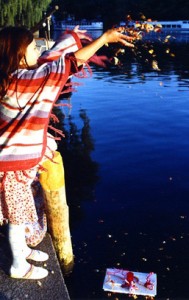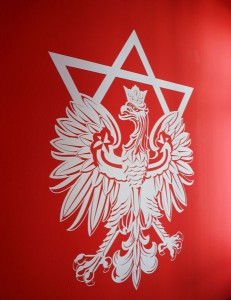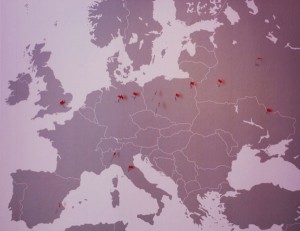With a flip of a wrist, showcases turn arbitrary objects into works of art. Now, I can find out what it will do to a human being. I am sitting in a transparent case which is part of the current special exhibition “The Whole Truth… everything you always wanted to know about Jews.” The visitors pass by, and we observe each other. Many read the text on the wall, throw me a look and hurry away.

Olga Mannheimer as a guest in the “Whole Truth” exhibition
© photo: Ernst Fesseler, Jewish Museum Berlin
Some stop, but keep a safe distance. I clear my throat, smile invitingly, and motion to the button on my blouse: “Ask me, I’m Jewish.” I qualified for this position, as I learned from a speech at the opening of the exhibition, by claiming to be able to tell the “whole truth” about Jews. Will anyone ask me to? The distance gradually shortens. One man wants to know what the object label on the case-window says – he does not have his reading-glasses with him. “Species: Diaspora Jew, Sub-species: Eastern European Jew, Variant: Banana Jew.” Thank you, says the man, and leaves quickly. “Banana Jew? Never heard of it,” says a woman. That was the term for Jews in Poland, I explain, who received citrus fruits and bananas from their relatives in the West.
Hesitantly, more people join the bystanders in front of my showcase. “Are you allowed to bring flowers to a seder?” “Can you sew a foreskin back on?” → continue reading


